Right off the bat, the Super Duty’s drivetrain made a big impression. “Keep it in 4 High and drive up the hill,” Ford’s off-road driving expert instructed. I was impressed with the 2017 F-250 Super Duty diesel’s ability to get traction to the ground on the steep ascent—with nary a hint of slip and without low-range gears. Our ride was Ford’s new Super Duty King Ranch Crew Cab 4×4 that sits on a wheelbase of 159.8 inches and tips the scales at over 3 tons.
“Now, when you can’t see forward on your own anymore, we’ll turn on the 180-degree front camera so you can continue with a clear view. Then stop, engage 4 Low and the e-locker, and you can drive to the crest of the next slope, where we’ll actuate the hill-descent control. Make sure you look at the graphics on the off-road screen to see the truck’s steering angle, wheel placement, and the degrees of slant on the inclinometer. Following that, you can drive as fast as you’d like around the upcoming winding track and through the large mud hole.”
Yee-haw! Fun? Indeed. Frivolity? To the contrary. This was only one exercise of many that included towing evaluations, maneuverability comparisons while hauling a weighty payload, plus acceleration and braking assessments against competitors. It was part of a two-day deep dive into Big Truck waters that have been stirred and shaken by Ford’s all-new-from-the-ground-up 2017 Super Duty. The magic in the miracle of our slo-mo crawl and high-speed prowess? A massive 925 lb-ft of torque under our belly—the segment’s best. Then again, the pickup’s updated gasoline engine and its best-in-class 430 lb-ft completed the course with ease as well.
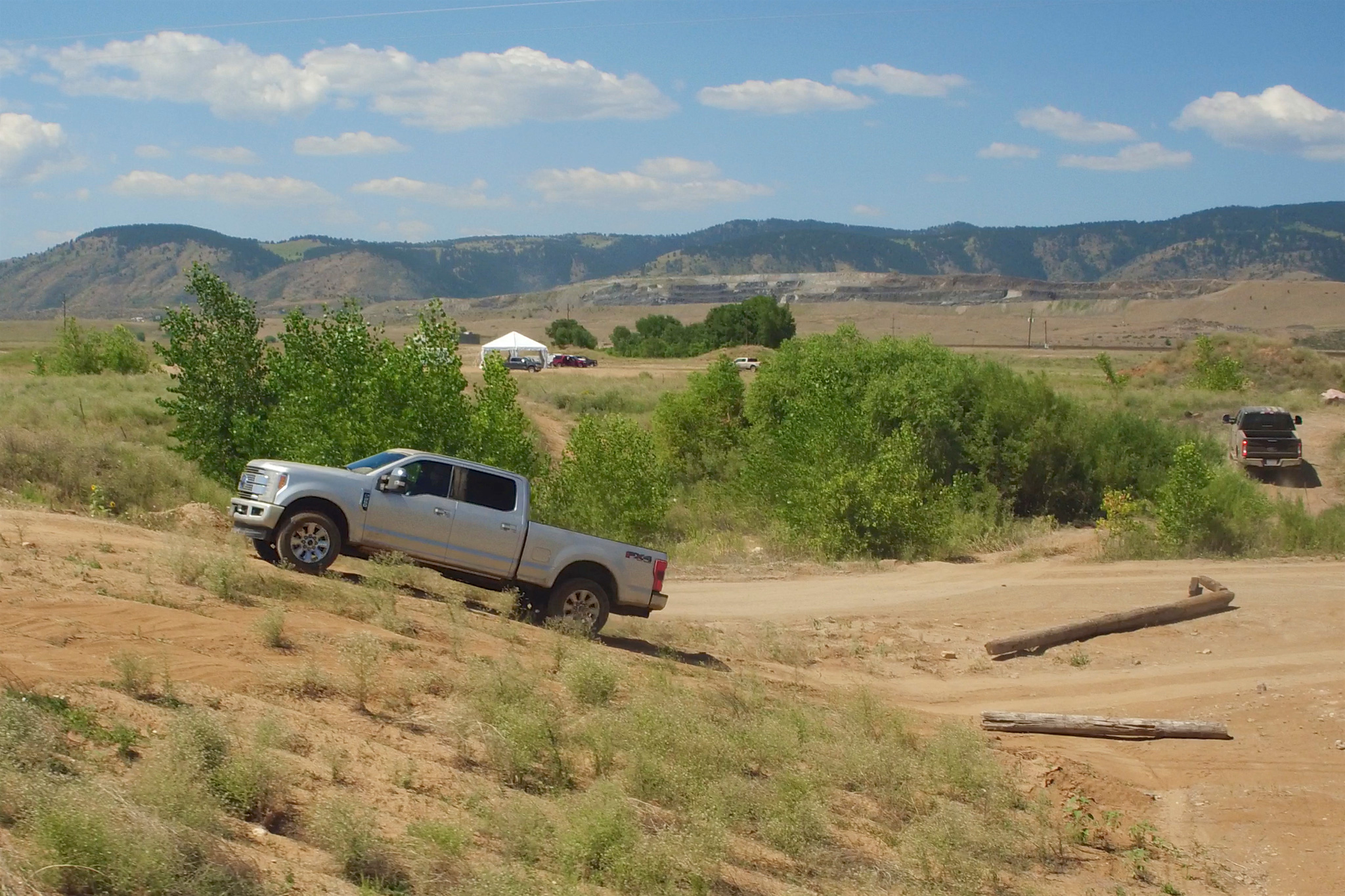
Ford set up a base camp at Denver’s Mile High Stadium with drive routes into the foothills of the Colorado Rockies to campaign the highlights of its new Super Duty. It will hit this road this fall as the “toughest, smartest, and most capable” with more than 8,500 pounds gross vehicle weight rating, says Ford. What does that mean for you? It’s safer, more competent, comfortable, and user-friendly on the road and off the pavement. You can haul your race cars with greater ease and less fatigue, and, if you have a fleet of collectibles to ferry to Pebble Beach or Amelia Island, you’ll have a bank of information at your fingertips with data on your truck’s performance, as well as individualized stats on up to 10 different trailers from an IP productivity screen. Think of it like this: Some of the world’s most intelligent driving assistance technologies onboard today’s cars have been injected into Ford’s beefy work trucks. Add to that bigger cabins and beds, features that provide a higher level of creature comfort, and creatively crafted stowage to convert your truck into a rolling office to carry and power your laptops, goods, and gear; plus, there are hidden and lockable bins to stash your valuables.
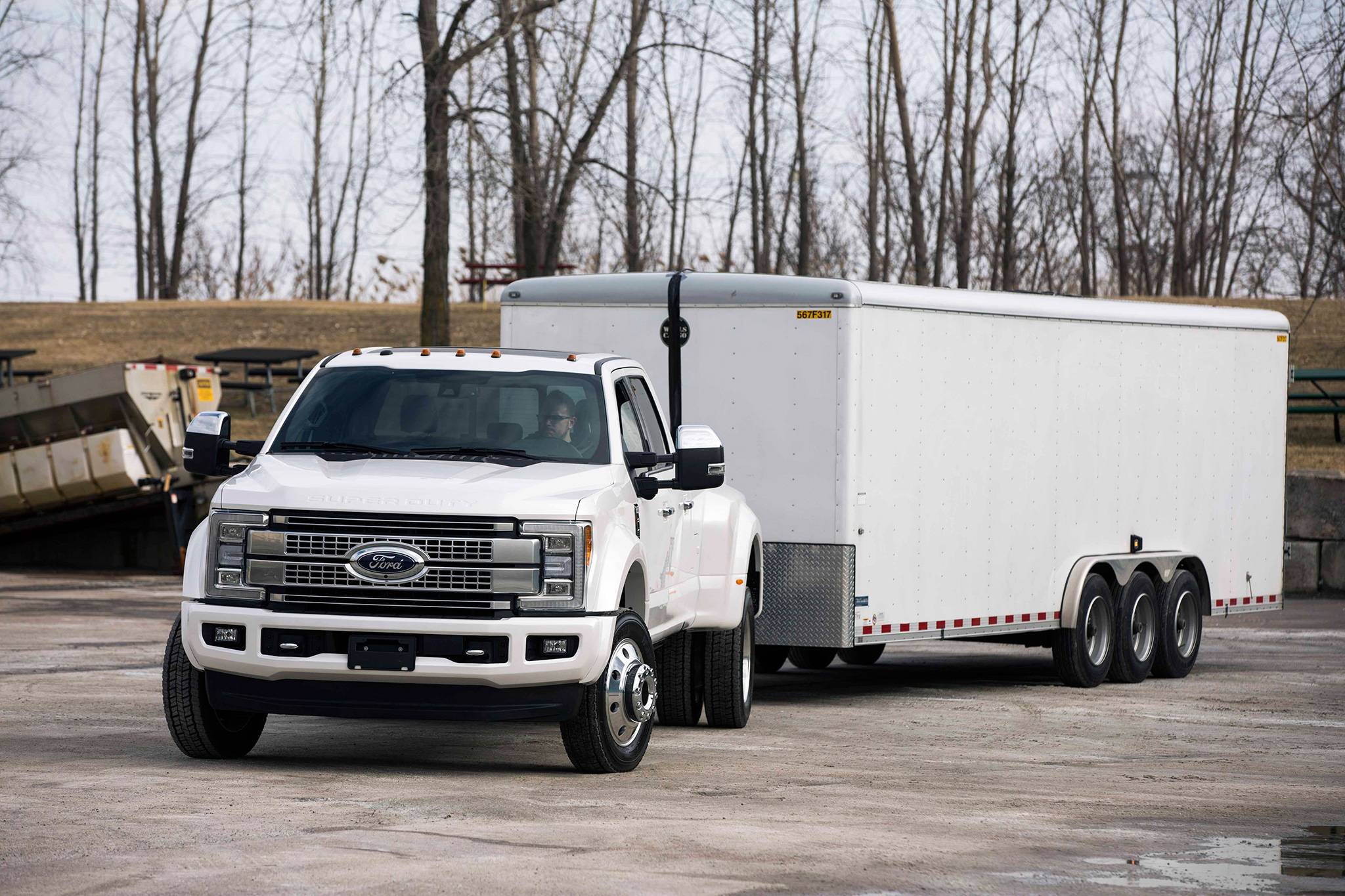
Pickups are big business and the largest of the land. Ford’s Super Duty, GM’s Silverado/Sierra HDs, and Ram’s HDs are in a perennial war of numbers that rivals the battle to become the U.S. president. This fight is purely political for some buyers with party or brand loyalty, but for the truck purveyors, bragging rights and ways to win votes are centered on supremacy of sales, peak payload, and top-most towing.
Ford rules when it comes to numbers: Since 1998, when the Blue Oval launched this line of heavy dutys for the ’99 model year, Ford has sold more than 12.5 million F-Series pickups (including the smaller F-150) and moved more than 460,000 in the first half of 2016. These sales numbers have given Ford bragging rights for 39 years. As for the Super Duty, it claims more than 40 percent of country’s heavy-duty market share, according to Doug Scott, Ford’s Truck Group marketing manager.
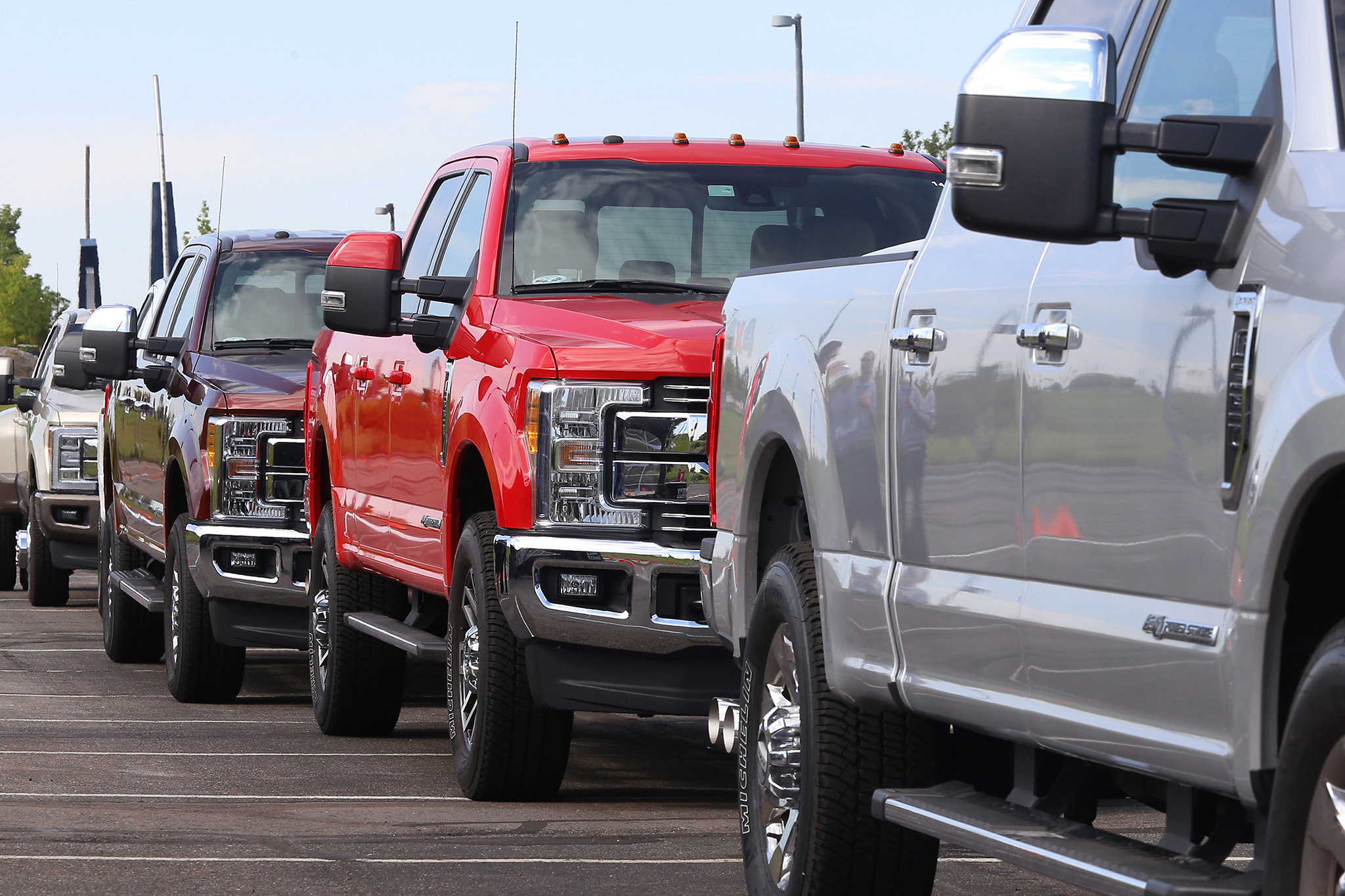
The revamped pickup is built with high-strength, military-grade aluminum alloy topside and high-strength steel underneath, netting a weight savings of up to 350 pounds. Engineers reinvested the weight, adding more robust components that have paid the dividend of increased towing and hauling ability, and boosted horsepower and torque by augmenting the gnarly bits, including the driveline, chassis, and suspension, to support the increases. The pickup now beats the competition with a collection of best-in-class numbers and technologies. Other significant upgrades are a new transfer case, larger DEF tank capacity (7.5 gallons), plus bigger axles and brakes and larger fuel tanks on the heftiest models.
The all-new, fully boxed frame is more than 95 percent high-strength steel and up to 24 times stiffer than the previous version, while the aluminum-alloy body shared with the all-new 2016 F-150 has proven to be more dent and ding resistant than the steel body it replaces. In a move of efficiencies, Super Duty shares the half-ton’s cab from the A-pillar rearward and wears a familiar family face up front.
We drove a variety of the trucks and found the 6.2-liter V-8 gasoline (it’s E85 Flex Fuel capable with CNG/propane prep) as likeable when towing a 10,000-pound trailer as the surprisingly quiet, second-gen 6.7-liter Power Stroke Turbo Diesel V-8 (B20 biodiesel capable). Both are mated to a Torq Shift six-speed auto transmission, which is a new version on F-250 models and carryover on others.
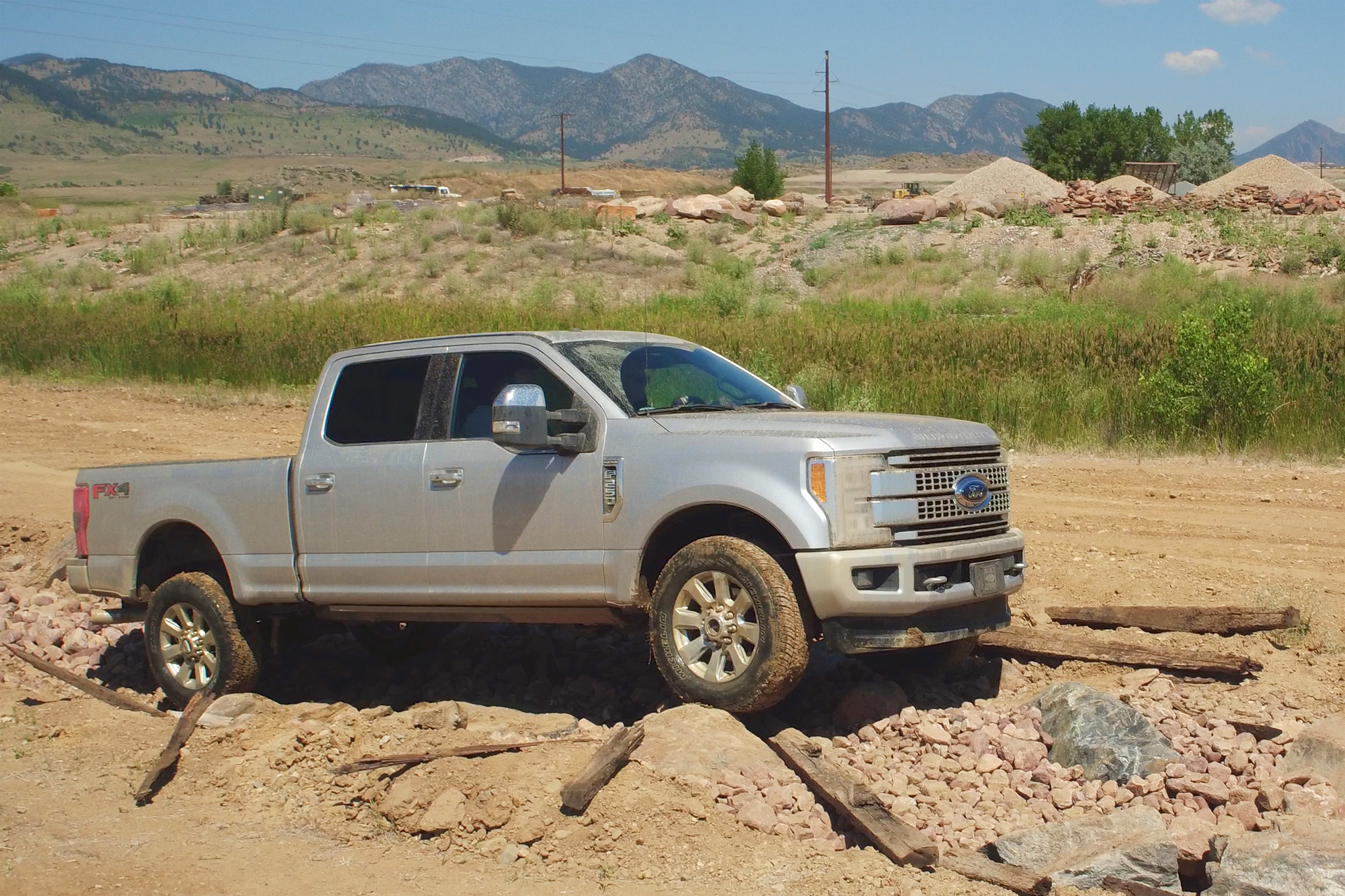
Three new driver assistance features added a wow factor while making the truck feel safer and lighter on its feet: adaptive cruise, which controls acceleration and slows to keep pace with traffic using preset distances and adding brake support, even when tugging a trailer weighing more than 32,500 pounds; adaptive steering, which reduces steering input needed for slow speed, smooths steering at higher speeds, and is especially helpful for towing stability arching the truck and trailer on a straighter cornering line; and the Blind Spot Information System with trailer coverage, which uses sensors in the outside mirrors to provide cross-traffic alerts and detect objects behind your truck and trailer.
Among the positive takeaways from our drive were the ease of access to get in and out of the truck with deployable running boards, the ergonomics of reaching pedals (adjustable pedals are available but not needed, even for our 5-foot-2-inch driver) as well as controls and knobs (they’ve been designed for use with gloved hands), and the comfort of the upgraded interior with multi-contoured seats that kept us snug through all our evaluations—unlike some of the competitors’ seats.
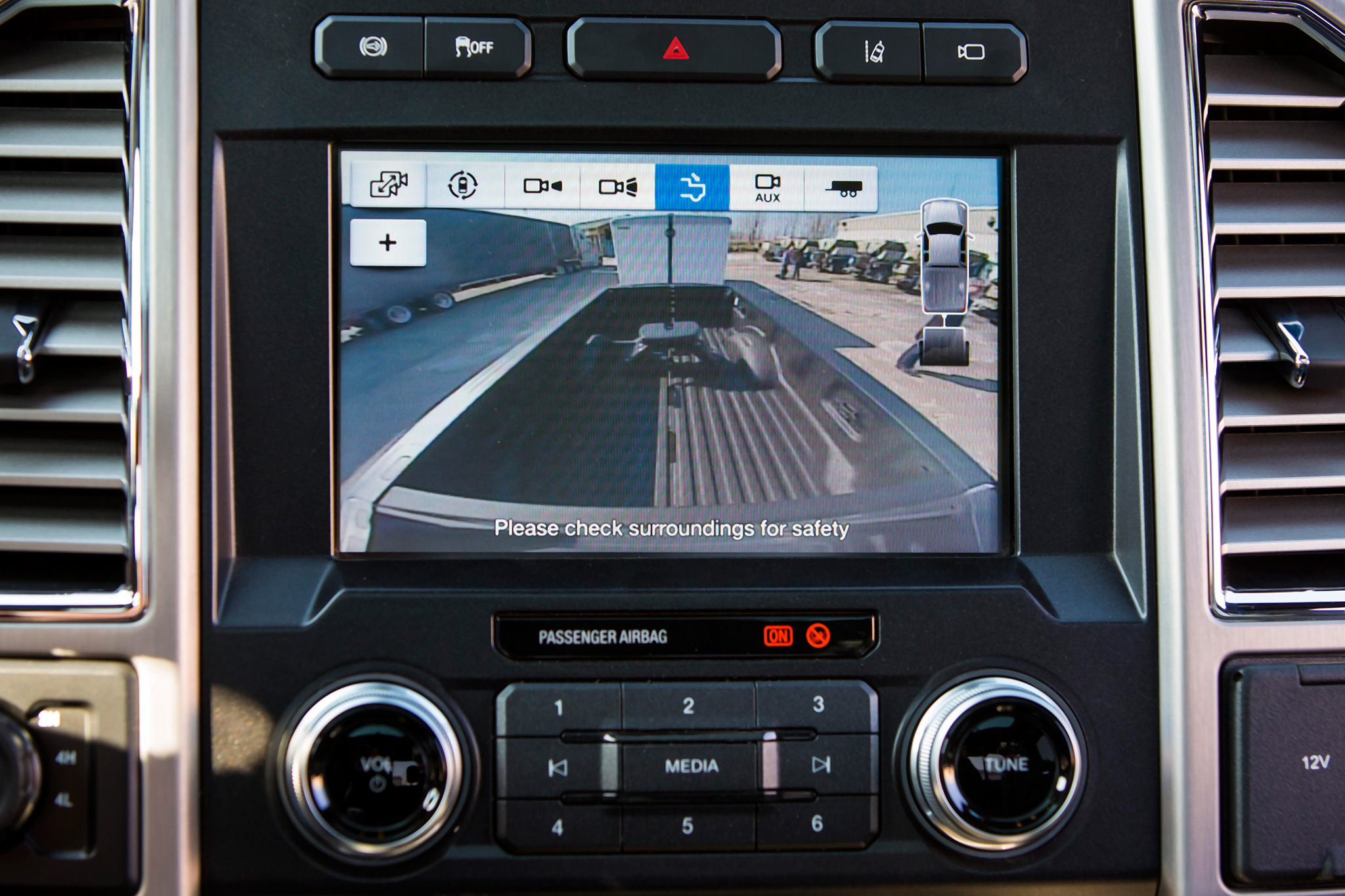
Our top surprise and delight features are a collection of new technologies for those who tow. There are seven cameras available for driving guidance, including a 360-degree view; some will direct you to a perfect hook up of your gooseneck or fifth-wheel trailer. Side-view mirror cameras and rear cameras work in tandem to project images on your interior monitor or provide information from the “smart towing assistance technologies,” Jackknife Warning, and Straight Line Backup Guidance, which has a dynamic steering wheel icon with arrows to indicate the direction of turn. You too can be an expert at the boat ramp, horse show, or RV campground.
Another feature of note: The truck’s trailering platform extends under the frame of the truck, eliminating the need for a weight-distributing hitch; it will now accommodate large boat trailers and pintle hitches, with the added bonus of new 2- and 2.5-inch receiver inserts included and nestled into the 3-inch receiver.
The new Super Duty comes with three cab choices, five trims, and several frames, engines, and drivelines. “There are up to one billion configurations,” said Scott. “More buyers choose 4WD and diesel powerplants, and the trend today is toward more upscale trims, as our buyers use their trucks for work but are seeking comfort and luxury, so we have tried to accommodate their needs. We even have buyers that still want a manual transfer-case shifter and manual locking hubs and, although that’s a small percentage, we have made a model available for them. But, the number one purchase decision for our buyers is towing. Nine of 10 buyers use their truck to tow.”
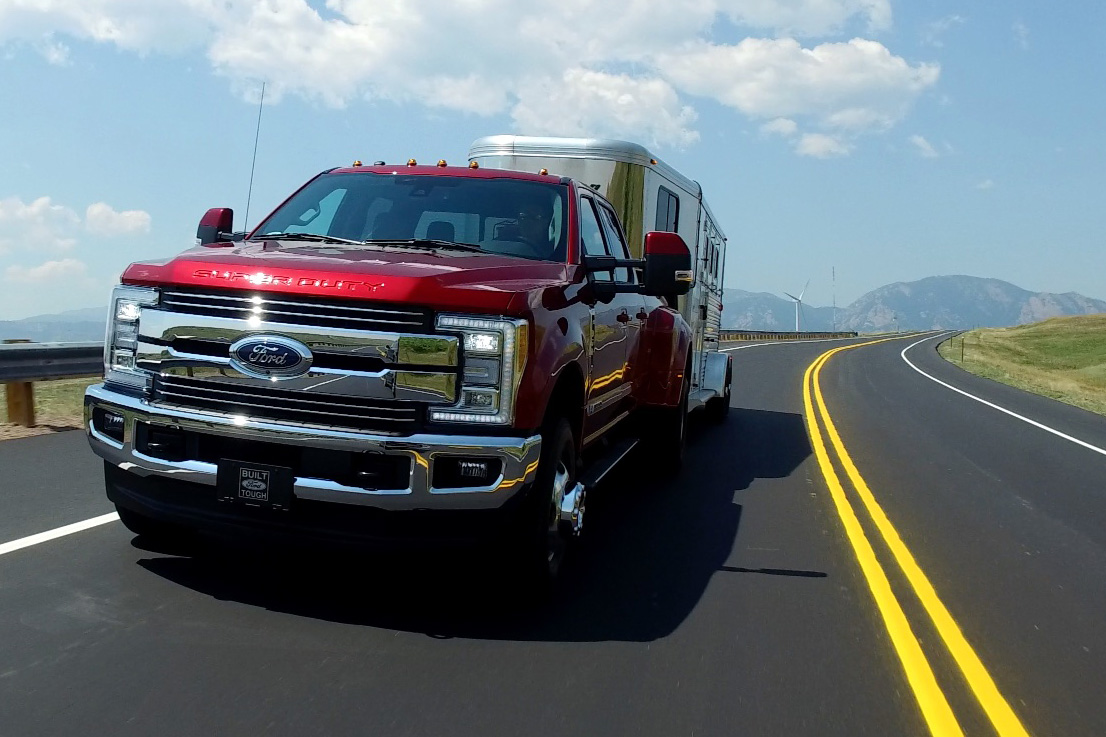
While the F-Series truck dates to 1948, as a stand-alone model line, the 2017 Ford Super Duty is the fourth-generation Super Duty to join the F-150 lineup in 1998. It was engineered with different mechanics and designed with unique cosmetics, whereas today’s new truck borrows the cab and many of the winning technologies and features from the smaller pickup. It will be built at Ford’s Kentucky Truck Plant. The gauntlet has been thrown.
17 for ’17: New class-exclusive features
1. Adaptive cruise control and collision warning with brake support
2. Adaptive steering
3. Blind Spot Information System with trailer coverage
4. BoxLink with premium locking cleats
5. Factory-installed customer-placed trailer camera
6. Inflatable rear outboard safety belts
7. Multi-contour front seats with Active Motion®8. Power-deployable running boards
9. PowerScope power-telescoping and power-folding trailer tow mirrors
10. Remote tailgate release with power lock
11. Standard flat load floor on SuperCab and Crew Cab
12. Stowable loading ramps
13. SYNC 3
14. Tailgate step
15. Trailer Reverse Guidance16. Trailer tire pressure monitoring system
17. Utility lighting system (LED side-mirror spotlights)
2. Adaptive steering
3. Blind Spot Information System with trailer coverage
4. BoxLink with premium locking cleats
5. Factory-installed customer-placed trailer camera
6. Inflatable rear outboard safety belts
7. Multi-contour front seats with Active Motion®8. Power-deployable running boards
9. PowerScope power-telescoping and power-folding trailer tow mirrors
10. Remote tailgate release with power lock
11. Standard flat load floor on SuperCab and Crew Cab
12. Stowable loading ramps
13. SYNC 3
14. Tailgate step
15. Trailer Reverse Guidance16. Trailer tire pressure monitoring system
17. Utility lighting system (LED side-mirror spotlights)
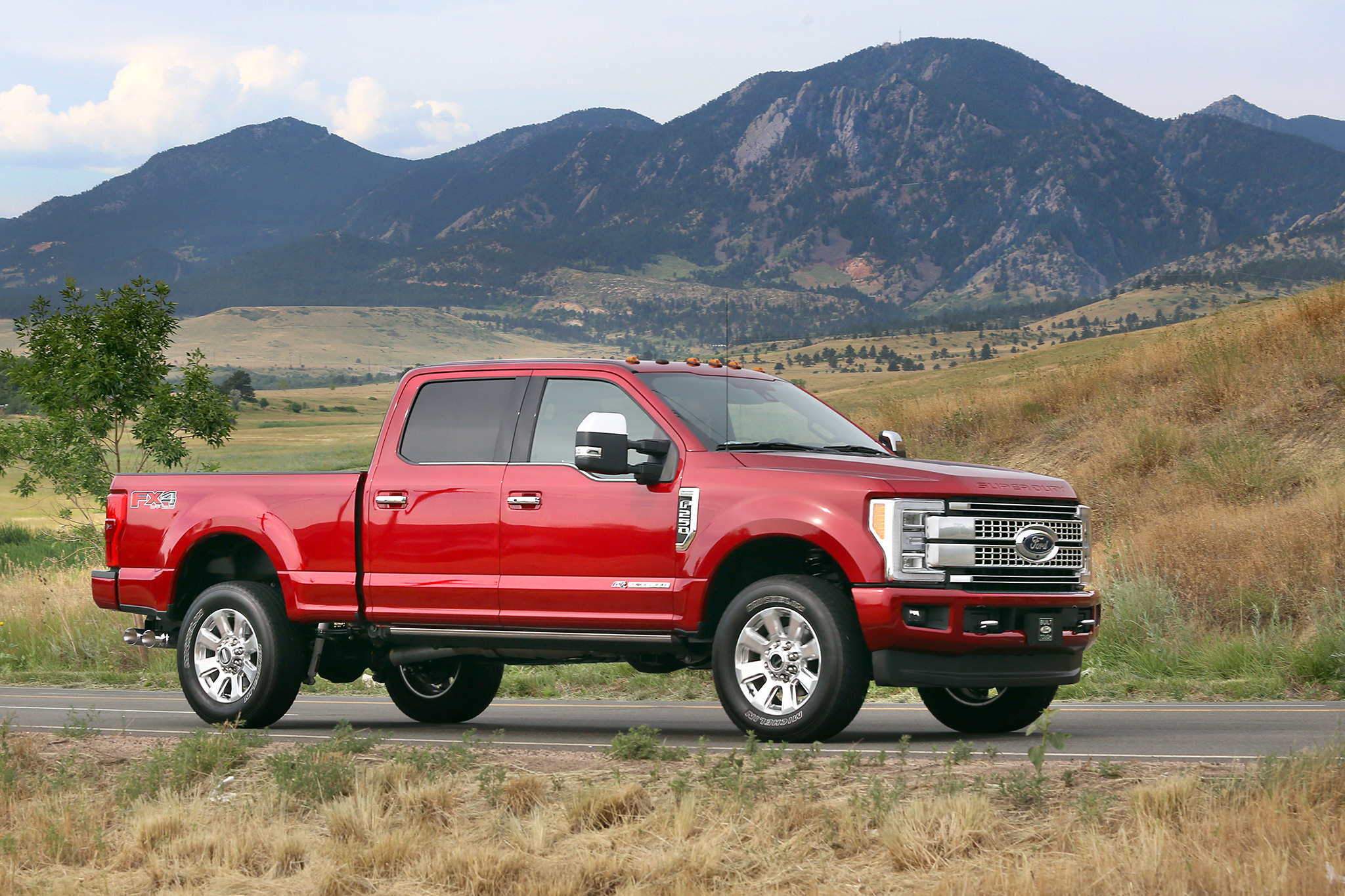
2017 Ford F-Series Super Duty Specifications
| On Sale: | Now |
| Price: | $32,535/$77,125 (F-250 XL /F-450 Platinum) (base) |
| Engine: | 6.2-liter V-8/385 hp @ 5,750 rpm, 430 lb-ft @ 3,800 rpm; 6.7-liter diesel V-8/440 hp @ 2,800 rpm, 925 lb-ft @ 1,800 rpm; 6.8-liter V-10 424 hp, 288 lb-ft |
| Transmission: | 6-speed automatic |
| Layout: | 2-4-door, 3-6-passenger, front-engine RWD/4WD truck |
| EPA Mileage: | N/A |
| L x W x H: | N/A |
| Wheelbase: | N/A |
| Weight: | 5,683-8,590 lb |
| 0-60 MPH: | N/A |
| Top Speed: | N/A |


